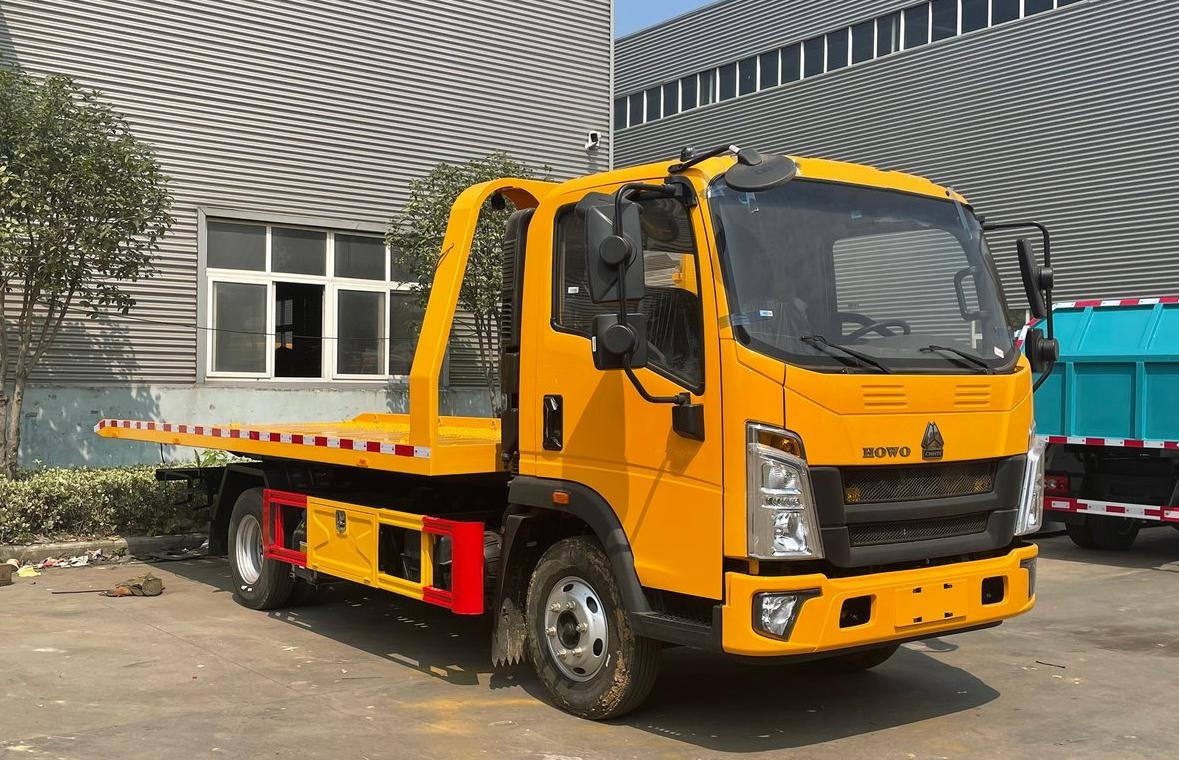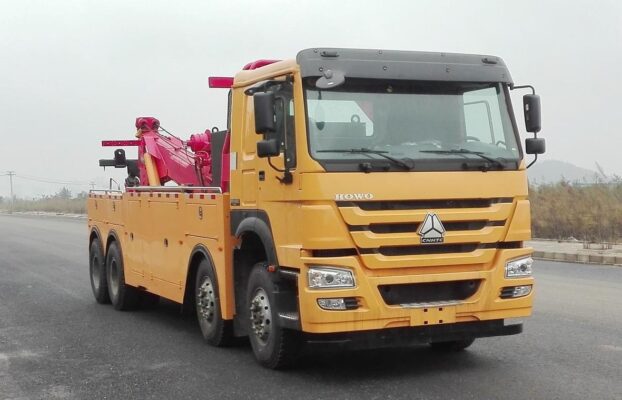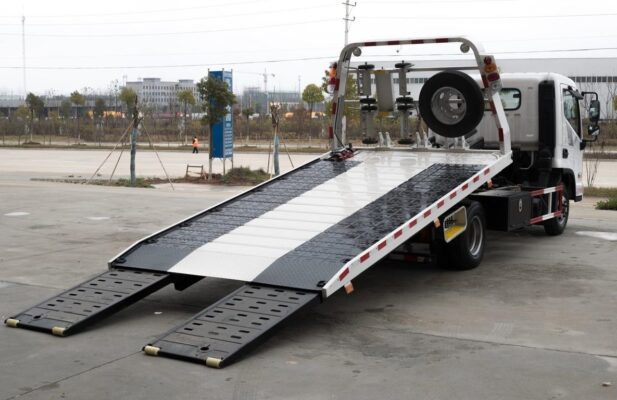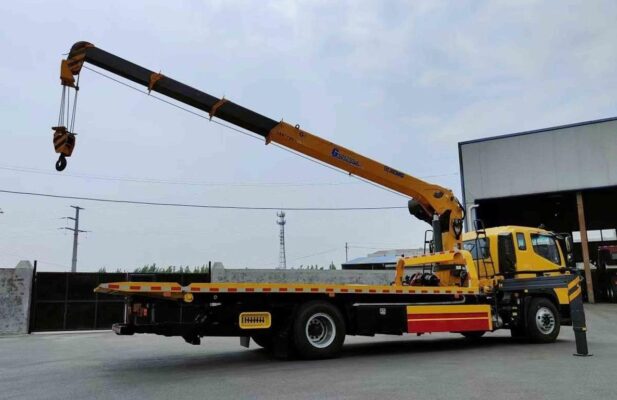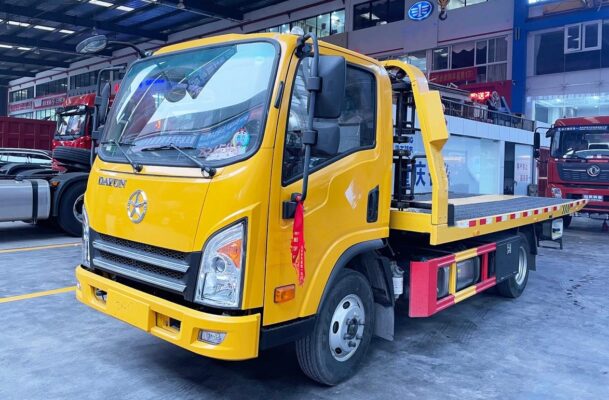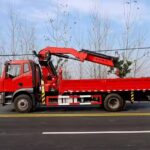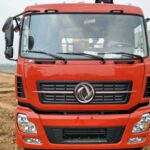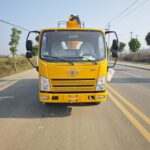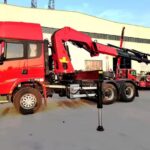The installation of wind turbines in wind farms is a complex process that requires precise lifting operations and careful planning. Various cranes are utilized in this process, primarily crawler cranes, truck-mounted cranes, and the newer tire cranes. Each of these crane types has unique characteristics that impact their performance during wind turbine installation. This article aims to compare these three types of cranes in terms of their structure, lifting capacity, operational efficiency, mobility, and economic feasibility, providing guidance for construction companies in selecting the most suitable equipment for their wind farm projects.
Characteristics of the Three Types of Cranes
Crawler Crane
Crawler cranes are designed for heavy lifting, featuring a lifting mechanism mounted on a robust crawler chassis. This design allows for significant lifting capacity while maintaining low ground pressure, which minimizes the risk of ground disturbance and damage. Key characteristics of crawler cranes include:
- Strong Lifting Capacity: Crawler cranes are capable of lifting heavy components required for wind turbine installations, such as nacelles and tower sections, making them highly suitable for this application.
- Low Ground Pressure: The crawler tracks distribute the crane’s weight over a larger area, reducing the pressure exerted on the ground and allowing operation on soft or unstable surfaces.
- Small Turning Radius: Crawler cranes can navigate tight spaces more easily than other types of cranes, which is beneficial in the often-constrained environments of wind farms.
- Good Climbing Ability: These cranes can operate on slopes and uneven terrain, which is common in wind farm locations.
- No Need for Outriggers: Crawler cranes can lift loads without requiring additional supports, making them more stable and versatile during operations.
В останні роки, crawler cranes have become increasingly prevalent in China, thanks to advancements in technology that have improved their capabilities and performance.
Tire Crane
Tire cranes represent a newer generation of lifting equipment, featuring a lifting mechanism mounted on a wheeled chassis designed for high mobility. The following are key features of tire cranes:
- Full Rotation Capability: Tire cranes can rotate 360 ступенів, providing flexibility in lifting operations.
- Extendable Outriggers: To ensure stability during lifting, tire cranes are equipped with four extendable outriggers, which can be deployed when needed.
- High Mobility: Tire cranes can travel with loads on flat surfaces without deploying outriggers, making them efficient for quickly moving between installation sites.
- Innovative Design: Companies like Xinda Fang Heavy Industry Technology Co., Ltd. produce tire cranes specifically designed for wind power equipment, incorporating hydraulic suspension, independent steering, and hydraulic leveling systems. This allows for precise positioning in confined spaces.
- Versatile Steering Modes: Tire cranes can operate in various steering modes, including conventional, transverse, crab, and in-place rotation, which enhances their maneuverability on construction sites.
The combination of these features allows tire cranes to excel in environments where mobility and adaptability are crucial.
Truck-Mounted Crane
Truck-mounted cranes are built on modified automotive chassis, providing them with unique advantages:
- Fast Travel Speed: Truck-mounted cranes can quickly move between job sites, making them ideal for operations requiring transportation over long distances.
- Strong Maneuverability: These cranes are designed for high maneuverability, allowing them to navigate urban environments and other constrained spaces effectively.
- Different Cabs: Truck-mounted cranes typically feature separate cabs for driving and lifting operations, enhancing operational efficiency.
Проте, while truck-mounted cranes are versatile, their lifting capacities may not be sufficient for the heavy components involved in wind turbine installations.
Comparison of Crane Usage in Wind Farms
When evaluating the use of crawler cranes, tire cranes, and truck-mounted cranes in wind farm installations, several key factors must be considered.
Lifting Capacity Comparison
The lifting capacity of a crane is critical in the installation of wind turbine components, which include the base, tower sections, nacelle, hub, blades, and transformers. Наприклад, in the Jilin Changling Yaojingzi wind farm, the main nacelle of a 1.5 MW wind turbine weighs approximately 68 тонн, with the heaviest tower section weighing around 55 тонн. Given these significant weights, the lifting capacity of the crane is a decisive factor.
Based on the lifting performance characteristic curves of the following cranes:
- Demag CC2500 Crawler Crane: This 500-ton crawler crane, equipped with a 96-meter main boom configuration, is well-suited for heavy lifting tasks.
- Xinda Fang QLY2150 Tire Crane: Specifically designed for wind power equipment, this crane has comparable lifting capabilities to crawler cranes.
- Liebherr LTM1500-500 Truck-Mounted Crane: Although this 500-ton crane has a 47.3-meter main boom and a 21-meter auxiliary boom, its lifting capacity is notably lower than that of both crawler and tire cranes.
From the comparison, it is evident that truck-mounted cranes generally have a lower lifting capacity compared to crawler and tire cranes. For installations involving wind turbines above 1.0 MW, crawler cranes and tire cranes are the preferred choices, while truck-mounted cranes serve primarily as auxiliary equipment due to their limited lifting abilities.
Operational Efficiency Comparison
Wind farm projects are often situated in remote locations characterized by challenging terrain, such as hills, grasslands, and tidal flats. Отже, operational efficiency is crucial in ensuring timely installations.
- Crawler Cranes: While capable of heavy lifting, crawler cranes require significant time for site preparation, including leveling, compacting, and laying steel plates. This can take 6 до 7 hours before they are ready for lifting operations.
- Tire Cranes: These cranes, on the other hand, take approximately 1.5 hours to position, extend outriggers, and level the vehicle before starting work. Their ability to operate in various travel modes allows for quicker positioning and setup, making them more efficient in the context of wind turbine installation.
In field observations, tire cranes can typically complete the installation of a 1.5 MW wind turbine within 1 до 2 days, saving nearly a day compared to crawler cranes, which is a significant advantage in projects with tight timelines.
Performance Comparison
The physical characteristics of the installation site and surrounding infrastructure play a vital role in crane performance. Most wind farms are located on narrow, compacted earth or gravel surfaces.
- Width and Mobility: The maximum width between the wheel edges of tire cranes and truck-mounted cranes is less than 4.5 метрів, allowing them to operate on 5-meter-wide roads. In contrast, crawler cranes have a track width exceeding 10 метрів, which limits their mobility in tight spaces.
- Transition Costs: Moving crawler cranes often involves disassembly, loading, розвантаження, and commissioning, resulting in high transition costs and low mobility. In contrast, tire cranes’ hydraulic independent suspension and steering system allow them to navigate uneven terrain effortlessly, adjusting the wheels according to road conditions within ±200mm.
- Climbing Ability: Tire cranes can achieve a climbing capacity of up to 30%, making them suitable for installations in hilly or mountainous areas, which is a significant advantage over crawler cranes.
Economic Feasibility Comparison
When considering the economic aspects of crane selection, costs associated with purchasing or renting equipment play a critical role.
- Cost Comparisons: Tire cranes are generally priced at about half that of large crawler cranes, while crawler cranes typically cost around 70% до 80% as much as truck-mounted cranes. This cost difference can significantly impact project budgets, especially for large-scale installations.
- Maintenance Costs: The maintenance costs for tire cranes are considerably lower compared to those of crawler and truck-mounted cranes. This ongoing cost advantage enhances the economic viability of tire cranes over the long term.
Despite the lower initial costs and maintenance needs of tire cranes, crawler cranes remain prevalent in the Chinese market due to the availability of manufacturers, mature technology, and the convenience of rentals.
Висновок
На закінчення, the comparison of crawler cranes, tire cranes, and truck-mounted cranes highlights the distinct advantages and disadvantages of each type concerning the installation of wind turbines at wind farms.
- Lifting Capacity: Crawler cranes and tire cranes are superior to truck-mounted cranes, making them more suitable for lifting heavy turbine components.
- Operational Efficiency: Tire cranes offer faster setup and mobility, while crawler cranes require more preparation time.
- Performance: Tire cranes excel in navigating tight spaces and uneven terrain, whereas crawler cranes have higher mobility challenges.
- Economic Feasibility: Tire cranes present a more cost-effective solution in terms of purchase and maintenance costs.
As technology advances, tire cranes are becoming increasingly competitive, leading to a dynamic relationship between these two types of cranes in wind farm construction. Ultimately, construction companies must carefully evaluate their specific project requirements, including lifting needs, site conditions, and budget constraints, to make informed decisions on crane selection for wind turbine installations.

